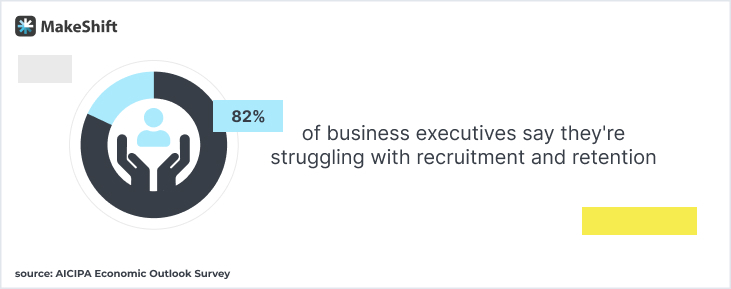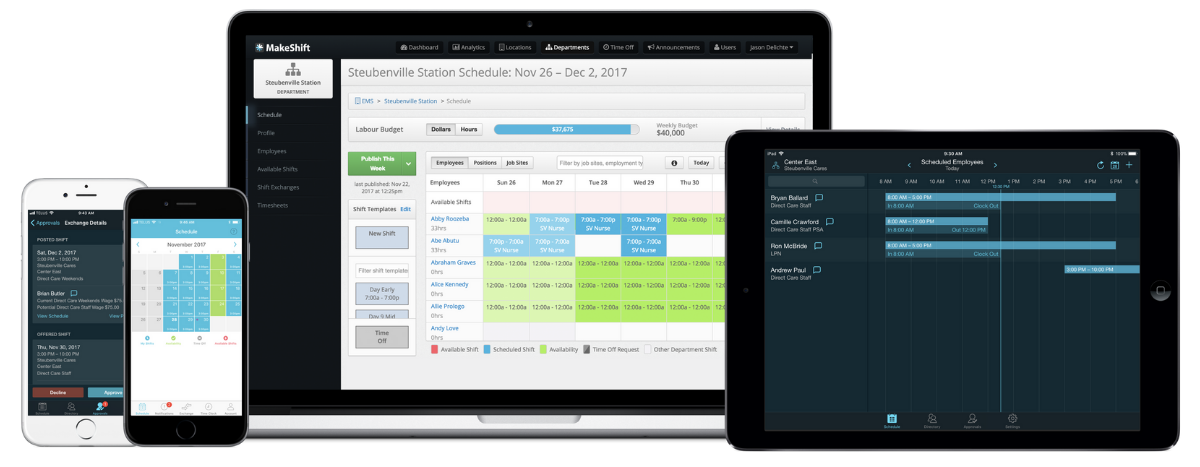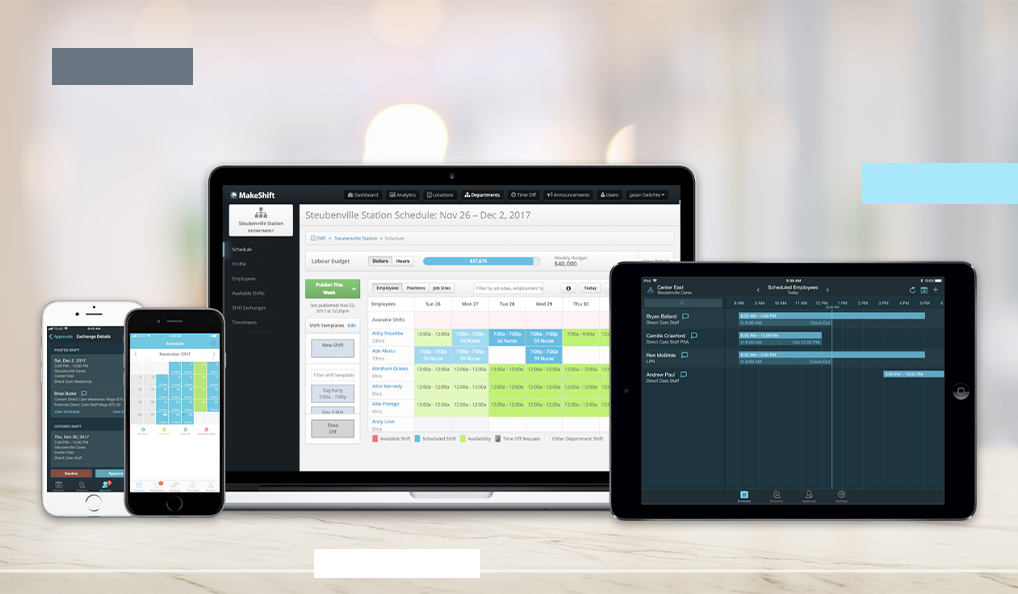On-call shift scheduling is standard across industries like healthcare, tech, and customer service.
In a perfect world, a rotation of employees is assigned to be available for work outside their regular hours, like evenings, weekends, and holidays, to jump in and assist in urgent situations.
The rotation ensures employees have time to rest and refresh before their next on-call shift.
While on-call shift scheduling is essential for businesses to ensure uninterrupted services and emergency response, on-call shifts can be a real pain for employees.
They must be accessible and ready to work at short notice, which can be tough on their personal lives and lead to burnout.
But there is a way to support your staff and your operation through proper on-call scheduling.
Today, we’ll cover:
- What Is On-Call Scheduling?
- 3 Benefits Of A Sustainable On-Call Schedule
- How To Create An Effective On-Call Schedule
- Support Your Staff With On-Call Shift Scheduling
What Is On-Call Scheduling?
On-call scheduling is where employees agree to be ready to come into work on short notice if needed.
We most commonly associate on-call scheduling with emergency services — particularly hospitals. If you’ve ever watched a drama series set in a hospital (Hello “Grey’s Anatomy”), you’ll regularly see doctors and nurses get called in at short notice to cover an emergency.
However, on-call shifts aren’t limited to emergency services — they’re not unusual in other industries like retail and hospitality and trades like plumbers or tow truck drivers.
According to the Economic Policy Institute, at least 6% of hourly workers, 8% of salaried workers, and 30% of other employees work on-call shifts.

Having to be on-call can take a toll on an employee’s life. Because even when you’re off work, you’re not really “off”.
In industries where having employees on-call is necessary, initiating a rotating on-call schedule can be the key to making it sustainable.
What Is a Rotating On-Call Schedule?
A rotating on-call schedule is a modern approach to sharing the responsibility of being on-call.
Everyone gets their fair share of time away from urgent tasks, and you can still be sure a team member will handle any crucial issues.
It's a great way to keep things fair and efficient and your business running smoothly.
Who Deals With On-Call Schedules?
When you’re on call, it can upset work and life balance. Rotating on-call scheduling addresses this to prevent staff burnout while still taking care of business.
Which employees are regularly impacted by on-call scheduling?
- Emergency Services — Firefighters, police officers, paramedics, and health care workers may be on call for a specific shift and respond to emergencies as needed.
- Maintenance Workers — Maintenance workers may be on call to respond to necessary repairs to the building or equipment that can’t wait.
- Customer Support — Customer support personnel may be on call to assist customers during off hours.
- Tradesman — Plumbers, locksmiths, and tow truck drivers may be on call to bail us out with midnight emergencies.
The Need for On-Call Scheduling
On-call scheduling serves a dual purpose.
- On-call scheduling ensures you have staff on the ready when emergencies occur, and you need extra or specialized workers to fill in.
- On-call scheduling gives your staff more predictability in their schedule — they know when to be on alert because they might get called in or when they can take it easy.
In addition, on-call scheduling can help fill schedule gaps when you have last-minute unfilled shifts, which happen for several reasons:
- Personal — A team member has a fender bender on the way to work and is now up to her neck in insurance and police reports.
- Emergency — An employee’s son broke his arm and had to be rushed to the ER.
- Illness — Whether it’s Covid or whichever stomach flu is going around, it will occasionally put some of your staff in bed for a day or 2.
- Burnout — Work overload can cause burnout, leading to last-minute absenteeism because an employee just doesn’t have it in them to come to work.
Shifts are also unfilled due to the ongoing labor shortage — there just aren’t enough people in the workforce.
Manufacturing, wholesale and retail trade, education, and health services have been hit more than other industries. There are more unfilled job openings than in other industries, which means existing workers are picking up the slack.
82% of business executives said their organizations struggled with recruitment and retention, and 57% of business execs reported having too few employees.

On-Call Scheduling — The Impact of Unfilled Shifts
When shifts go unfilled, it can be a real headache for employees and businesses.
And have a heavy impact on both.
Impact on Workers’ lives
Unfilled shifts impact the workers’ lives, who are picking up the slack. They’re working excessive overtime and handling extra responsibilities, eventually affecting their lives outside of work.
Let’s use these scenarios as examples:
- Nurses may not get to be home enough with their families — they’re working overtime, regularly missing their kids’ soccer games and school plays.
- College students picking up extra unfilled shifts at the restaurant — excessive overtime has caused exhaustion. This affects their focus, and their grades drop, impacting their education.
Without proper on-call scheduling, employees who step in to work the unfilled shifts struggle with burnout. The effects of burnout can manifest in many ways:
Physical health —
- Difficulty sleeping
- Gastrointestinal issues
- Headaches
- Chronic fatigue
- High blood pressure
Emotional health —
- Depersonalization (i.e., patients or customers become tasks to complete rather than people who need your care and empathy)
- Apathy
- Increased irritability or frustration
- Emotional numbness
- Sadness
Overall well-being —
- Social withdrawal — Canceling plans frequently or avoiding making them in the first place
- Emotional exhaustion — Being cold and distant or avoidant
- Sleep deprivation — Not sleeping or oversleeping to make up for lack of sleep and never feeling rested
- Frequent illness — Showing physical symptoms of a weakened immune system, digestive issues like IBS, or chronic sickness
Impact on operations
There’s no debate here — unfilled shifts and overworked employees will profoundly affect your business operation.
According to a CFO survey, roughly 3/4 of CFOs said the labor shortage was impacting revenue, and about 1/2 indicated it was limiting both revenue AND full-capacity operations.

Let’s put it in perspective with a few examples:
- Fewer nurses affect the quality of care — Fewer nurses mean they’re each treating more patients. It’s easier for a nurse swamped with patients to administer the wrong medication dosage.
- Less retail workers affect customer service — Waiting in long checkout lines or for help from an employee frustrates your customers.
- Fewer restaurant servers affect your bottom line — You may have to close your doors 1 day a week because you just don’t have the staff. Most customers will just eat somewhere else.
- Fewer hotel workers affect your profit — If you have 25 rooms that haven’t been cleaned because you’re short on housekeeping staff, you can’t sell those rooms, and your revenue takes a hit.
- Unfilled shifts affect the ability to fill consumer demand — The labor shortage in the manufacturing industry has impacted businesses’ ability to meet consumer demands for specific products.
In addition to the impacts above — time is money, and the time it takes to go through a call list to try to fill a shift is a waste.
Schedule gaps cost profits and patient care.
The solution is to have an excellent on-call scheduling process and support for your employees.
3 Benefits Of A Sustainable On-Call Schedule
A sustainable on-call schedule respects and values employee time, system uptime, and functionality.
When you have a streamlined, sustainable on-call scheduling process, you’ll experience these 3 benefits:
- Increased Flexibility — An on-call schedule allows employees to work around their availability and schedule. This benefits workers who have other commitments or need more schedule flexibility.
- More Productive Employees — Employees that get regular time off and get to rotate their on-call schedule are refreshed and can be more productive at work.
- Improved Response Time — An on-call schedule can help you respond quickly to customer inquiries or emergencies. This improves patient care and customer service.
Predictability and On-Call Scheduling
The main reason for creating an on-call scheduling process is to combat unpredictability.
As you know, unpredictability goes with the territory in any industry that needs staff to be on-call.
It’s hard to predict demand, and you've got to have people with the right skills waiting in the wings, just in case.
- In a hospital, you don’t know when someone will need midnight surgery on their broken leg, so you need an orthopedic surgical nurse on call when that happens.
- In the world of IT, when a server goes haywire or a virus infects the corporate network, you need knowledgeable IT staff on-call to fix the problem on the double.
- Let’s hear it for the trade industries. When your basement has 2 inches of water from a burst pipe at 2 am on a Saturday, you need a skilled plumber on call to come to the rescue.
How To Create An Effective On-Call Schedule
On-call will mean something different to every business operation. Analyzing your needs and creating an on-call schedule that works best for your employees and your operation is essential.
- Talk To Your Team — This includes ensuring contact info is current and asking employees about their availability. Also, be sure to ask for feedback — how do your employees feel about your current on-call scheduling process?
- Define What “On-Call” Means For Your Operation — Explain what “on-call” means to your operation and lay out expectations for staff when they’re on-call (i.e., how soon they should be on site when called in).
- Provide Support — Working long shifts and being on-call can be tiring and stressful. Encourage shift swaps if an on-call shift is particularly stressful to give them time to recoup. Encourage communication with your team by checking in regularly.
- Build Your On-Call Schedule Based On Skill — Skills-based scheduling provides the benefit of having the right people in the right spot.
- Divy Up Shifts Equally — Do your best to rotate on-call night shifts with multiple employees to stay ahead of burnout and keep an eye on excessive overtime.
- Use Technology To Streamline The Process — Technology streamlines the schedule management process and makes creating an effective on-call schedule easy. Use scheduling software to reduce and automate the time it takes to create schedules.
BONUS — Tech gives you increased oversight to enhance rotating on-call schedules.
Support Your Staff With On-Call Shift Scheduling
On-call shift scheduling is just part of the job in many industries. But chaotic a chaotic scheduling process doesn’t have to be.
You can support your staff and your operation by creating a sustainable on-call scheduling process that promotes work/life balance.
Need help streamlining your staff scheduling? Book a demo with MakeShift today to see how simple scheduling can be.








